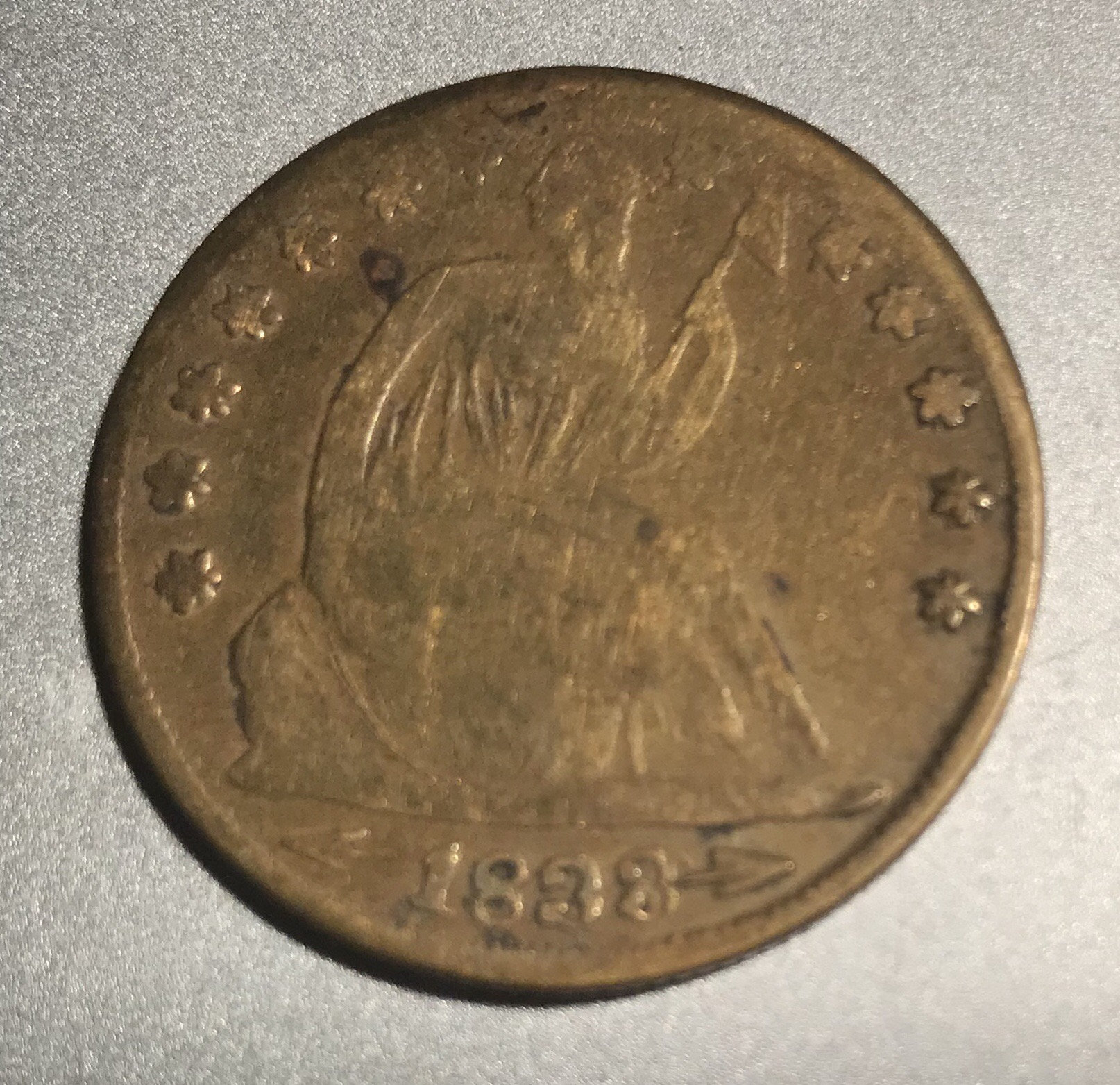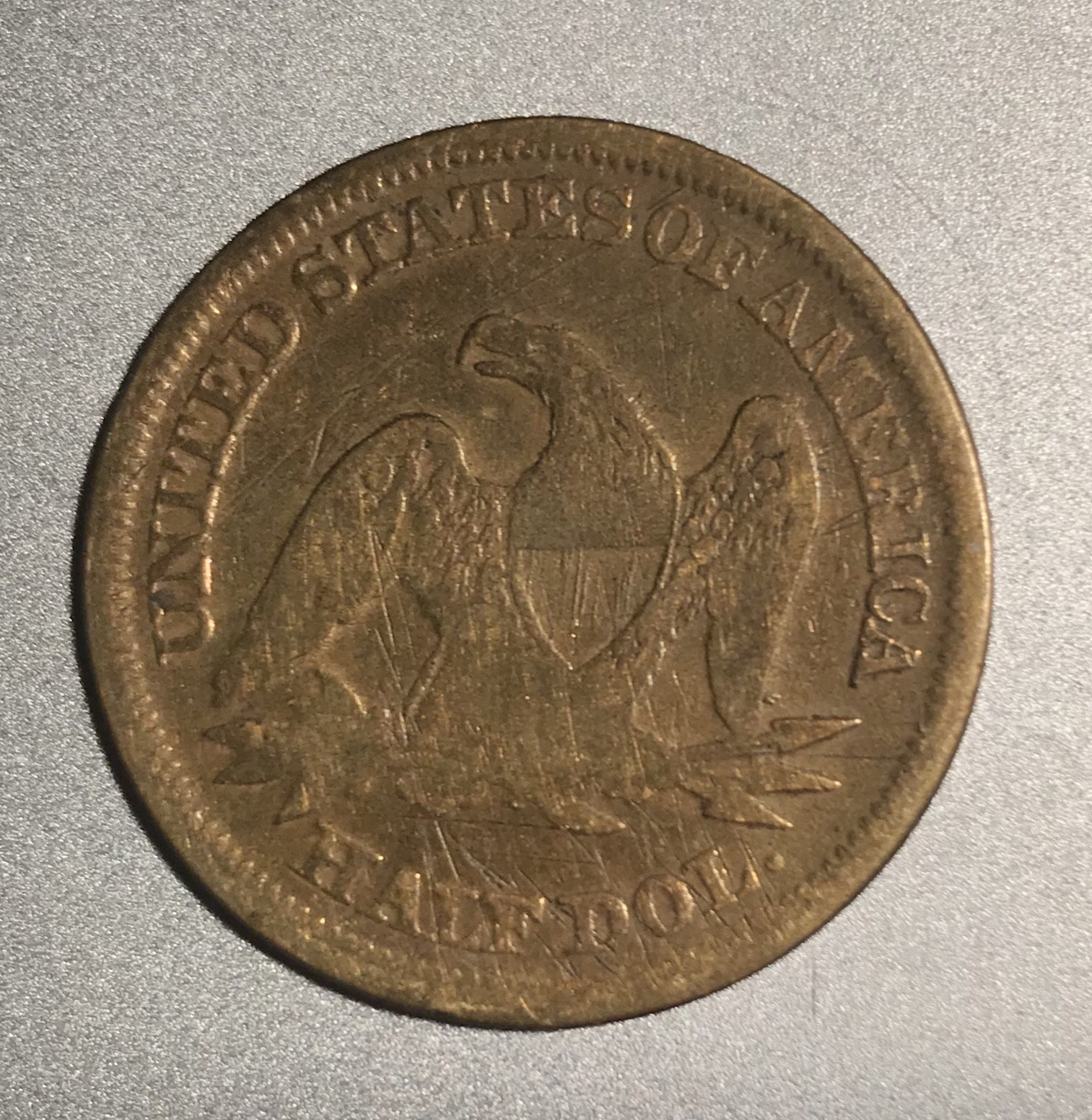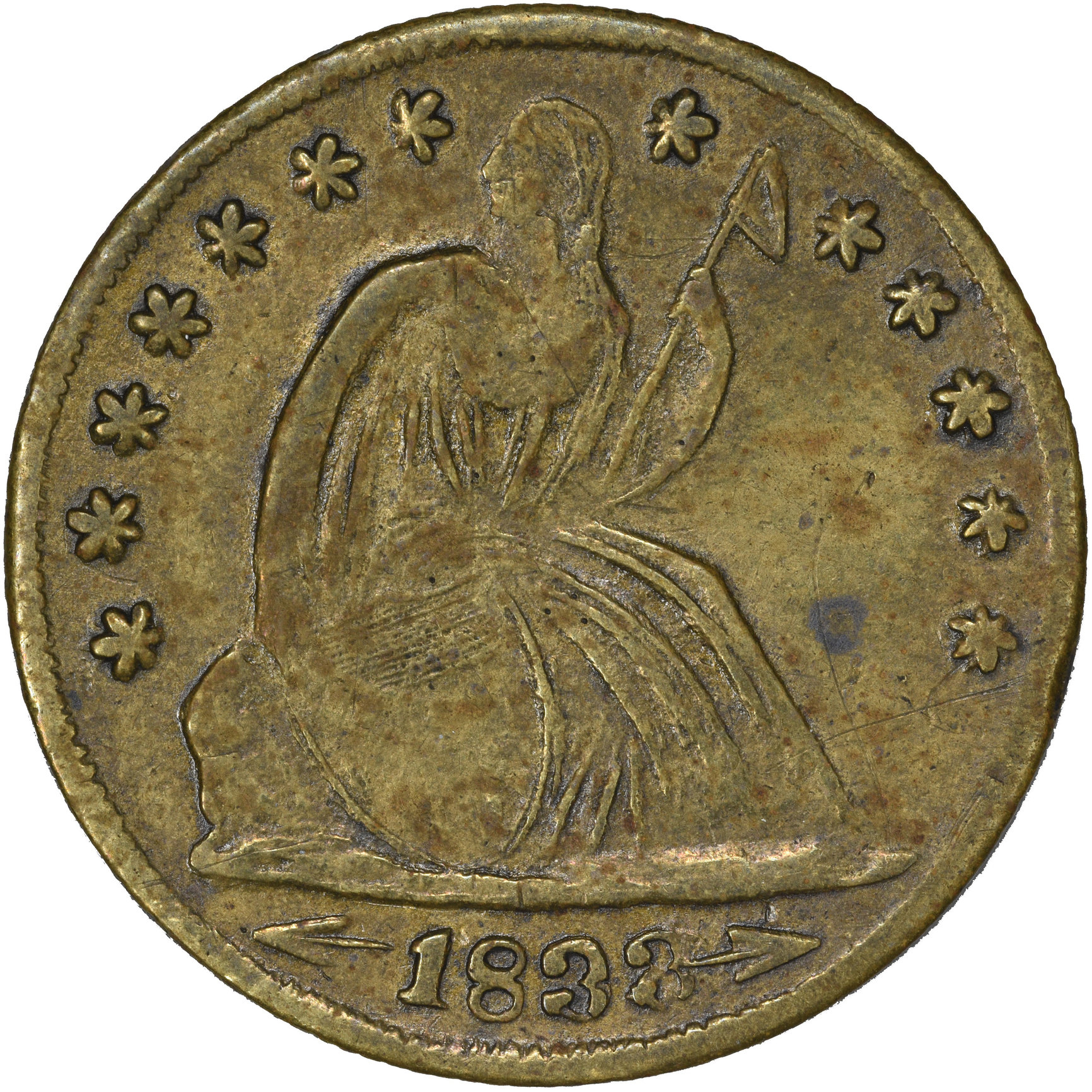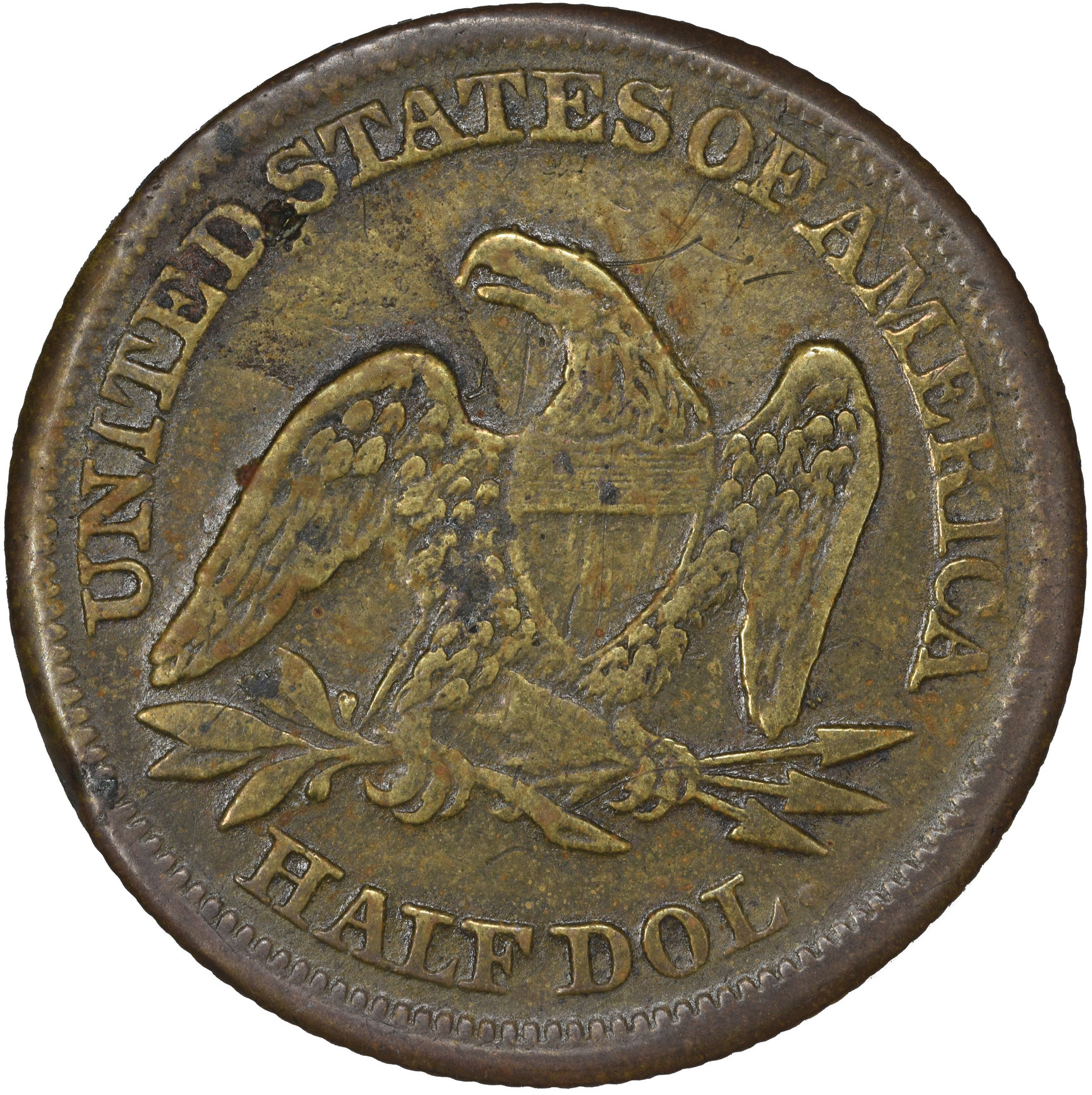I don’t see this Seated Half listed in the Red Book...


Andy Lustig
Doggedly collecting coins of the Central American Republic.
Visit the Society of US Pattern Collectors at USPatterns.com.
Doggedly collecting coins of the Central American Republic.
Visit the Society of US Pattern Collectors at USPatterns.com.
7
Comments
That is not real. Fantasy.
Cleaned and scratches.
So ... Gobrecht copied the design from this one huh?
Yeah, the 1833 With Arrows obverse is supposed to have the With Razors reverse!
.
But seriously, Is this German Silver like a lot of the Bust Half counterfeits? I have always thought that some if not many of the Bust Half counterfeits were made during the Civil War, when hard coin was scarce and people's memories of the old design might have been fuzzy enough to help the counterfeits pass.
These are fun - and your example is one of the nicer examples I've seen.
Nope - these were made on a brass planchet (like many die struck counterfeit Seated half dollars). Hand-made die obverse, transfer die reverse - interesting hybrid counterfeit.
Very little fractional U.S. silver was counterfeited during the Civil War and until the mid-1870s. Instead, the various emergency monies in circulation (stamps, notes, tokens, etc.) were the primary targets of counterfeiters. It seems that CBHs stopped being counterfeited between the late 1840s and early 1850s with the transition to the Seated type.
Here is my set piece.


It does have a kind of contemporary counterfeit look to it.
Thanks for the better pictures. The brassy color is certainly different that that seen on the Bust Half counterfeits.
Maybe it was just something about the shapes of the 3's that reminded me of the Bust Half counterfeits.
gee, no CC on it? cool, anyway.
bob
Are you trying to hurt my feelings?
Doggedly collecting coins of the Central American Republic.
Visit the Society of US Pattern Collectors at USPatterns.com.
Is it true counterfeit or is it a type of game chip? If a true counterfeit it probably had a silver-colored wash when new.
That is a twue counterfeit made with intent to spend.
It would probably fit slightly closer, technically, to an 'imitation counterfeit' since the date clearly does not correlate with the design. By changing the date to some 'fantastical' year, counterfeiters skirt conventional counterfeiting laws, especially if they had a solid lawyer representing them. This was most likely the case here, as well as on just a handful of other contemporary counterfeits I've seen and recorded.
Wow one of a kind LOL
Very cool, would like to buy one of these.
An authorized PCGS dealer, and a contributor to the Red Book.
I reject the idea that the use of a date not appropriate for the design makes a counterfeit coin not a counterfeit. Henning nickels are counterfeits. 1923-D and 1930-D dimes are counterfeits. 1919 $20 Saints are counterfeits.
Heck, there are 1833 half dollars. How is a merchant supposed to know 20+ years later what the design was back then?
I predict someone will bring up Dan Carr any minute now........
I'm absolutely not saying it is not a counterfeit - it certainly is - but just a different class of counterfeit. I've found at least a couple of historical reports/accounts where counterfeiters were found innocent in a court of law on account of altering a date or other design element such that the counterfeiters' creations could no longer be considered a fascimile of a mint-made coin. This was the interpretation of counterfeiting in 19th century America - this is purely what I'm referring to. Today, our views and laws on counterfeiting are different and have evolved as such.
Further, many merchants, at least in the NE, knew their U.S. coinage very well prior to the Civil War - they had to given the dozens of different denominations and other countries' coins circulating there. At this time, a 20-30 year age difference for coins was not that significant and both coin types - Bust and Seated - were still in active circulation. It would not take much effort to realize that CBHs were no longer being made after the 1830s, and that Seated coins were not being made in the same years as the Bust design, save for 1839. There were also regular newspaper announcements of coin design changes, and this news also traveled quickly from person to person given their more social lifestyles then.
Here is a quick list of some of the 'imitation counterfeits' I know of made prior to the Civil War (I own all but one of the varieties on this list).
1826 Bust Dime
1838 Bust Dime
1846-O Seated Dime
1787 FH Half
1878 FH Half
1816 CBH (not the modern Dan Carr counterfeit)
1836-O CBH
1840 CBH
1842 CBH
1847 CBH
1833 Seated Half
1801 Half Eagle
1805 Eagle
1808 Eagle
Metal manipulation. Unlike those manipulating the precious metals market.
``https://ebay.us/m/KxolR5
You forgot the 1787 Flowing Hair half counterfeit, the companion piece to the 1878 FH counterfeit.
Yes - good catch. List updated
I remember being fascinated by the 1787 on the cover of the dust jacket for Taxay's "Counterfeit, Mis-Struck and Unnofficial U.S. Coins." It was one of the reasons why I bought the book.
An interesting subset of "counterfeits of coins that do not exist" would be the Betts counterfeits.
Be verwy quiet, I am hunting wabbits!
Definitely a coin buy where the seller left some meat on the bones.